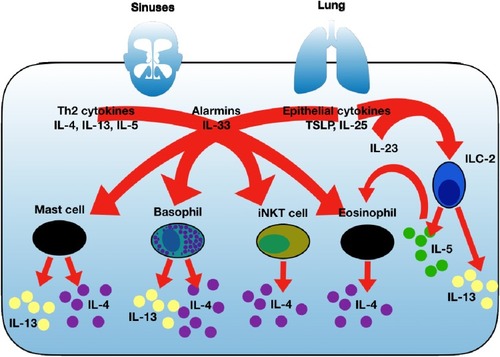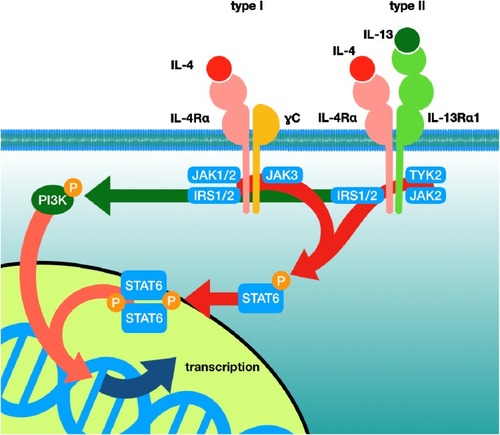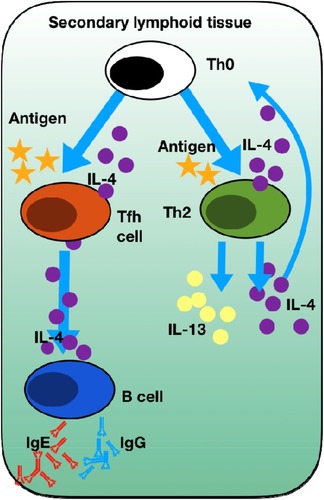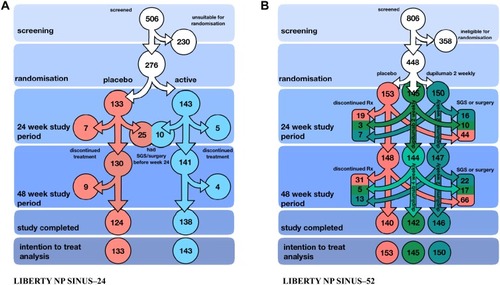Figures & data
Figure 1 Summary of key T2 cytokines and cells with established roles in sustaining T2 inflammation and key sources of IL-4 and IL-13. IL-4 and IL-13 are secreted from several cellular sources and along with other key T2 cytokines such as IL-5, IL-33, IL-25 and TSLP can lead to further IL-4 with or without IL-13 secretion depending on the cell type. This leads to immune amplification and auto-inflammatory loops that sustain mucosal disease and contribute to airway disease severity. ILC2 cells, particularly in response to IL-33 secrete large amount IL-13 as well as IL-5.

Figure 2 Summary of IL-4 and IL-13 receptor signalling pathways. The type 1 and type 2 receptor system and the main signalling cascade in relation to specific receptor activation in a cell are illustrated.

Figure 4 Summary of IL-4 in establishing T2 inflammation. Naive T helper cells (Th0) can only undergo differentiation into Th2 cells upon antigen presentation by dendritic cells in the presence of IL-4. This is a key step in the establishment of Th2 mediated inflammation. Tfh cells in the presence of antigen and IL-4 undergo activation to produce further IL-4 that is essential for the induction of B cell-dependent production of IgE and IgG.


